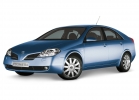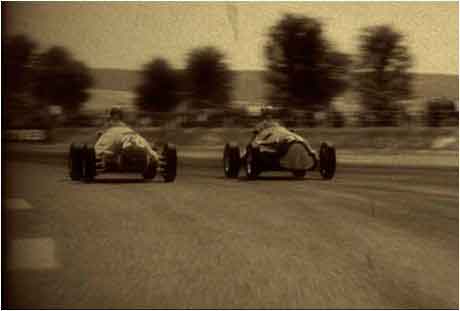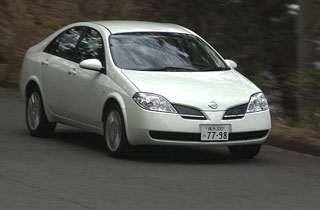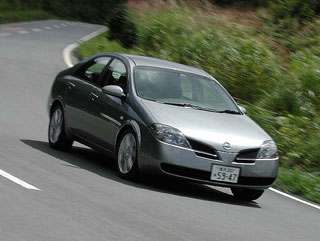Test drive Nissan Primera sedan since 2002 sedan
Hasty exegetics
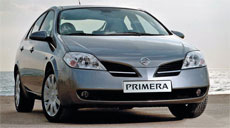 The debut of the last Primera with the P12 index was interpreted as an application for a brilliant future. Alas, they hurried with exegetics. The model has become an example of unjustified hopes.
The debut of the last Primera with the P12 index was interpreted as an application for a brilliant future. Alas, they hurried with exegetics. The model has become an example of unjustified hopes. Remember 2002 when, considering the new Primera, everyone unanimously wondered that this was a serial car, and not some concept car. However, later the car, although it did not fail with a bang, did not live the most prosperous life (last year
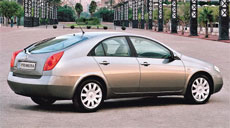 she was discontinued). Partly the problem is that the car is too futuristic. But it has long been known that avant -garde models are aging much faster than cars solved in a conservative way. But there are other claims. True, not to the appearance. Primera, of course, is unusual in comparison with the modest predecessor P11, but overall proportional and harmonious. I am glad that she offers a wide selection of modifications: this is a sedan, a station wagon, and a hatchback full, so to speak, a gentleman's set!
she was discontinued). Partly the problem is that the car is too futuristic. But it has long been known that avant -garde models are aging much faster than cars solved in a conservative way. But there are other claims. True, not to the appearance. Primera, of course, is unusual in comparison with the modest predecessor P11, but overall proportional and harmonious. I am glad that she offers a wide selection of modifications: this is a sedan, a station wagon, and a hatchback full, so to speak, a gentleman's set! 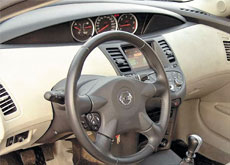 What about the reliability of the case? Metal, like paintwork, high quality: rusty Primera something from the field of fantasy. But, unfortunately, from time to time, the car has an electrician’s car: at one time he gained bad fame due to the fact that it was difficult to start in the frost (the manufacturer seemed to solve the problem by changing the engine control program). In addition, there are still output blocks of ignition of machines for which the original xenon is installed (so as not to spend money on the replacement of the headlights, you can buy a non-original kit, since they are inexpensive today).
What about the reliability of the case? Metal, like paintwork, high quality: rusty Primera something from the field of fantasy. But, unfortunately, from time to time, the car has an electrician’s car: at one time he gained bad fame due to the fact that it was difficult to start in the frost (the manufacturer seemed to solve the problem by changing the engine control program). In addition, there are still output blocks of ignition of machines for which the original xenon is installed (so as not to spend money on the replacement of the headlights, you can buy a non-original kit, since they are inexpensive today). Some characteristics
Type of body
Sedan / hatchback (station wagon)
Stream doors
4 / 5 (5)
Summer places
5
Length
4565 (4675) mm
Width
1760 mm
Height
1480 mm
Wheelbase
2680 mm
Acceleration to 100 km / h*
9.5 s
Max. speed*
205 km / h
*Data for a car with a 2.0 liter engine and manual transmission.
 The certain side of Primera is certainly a salon. At one time, he struck everyone with an avant -garde design, and so far the decisions used by the designers of the Japanese company look quite fresh. It is good that the ergonomics remained quite tolerable (except that the devices located in the center will not like everyone). As for the landing of the driver and the conditions created for passengers, the designers did everything as it should. But the trunk is very average by the standards of its class (the sedan has 450 liters of the sedan; the station wagon with a hatchback, of course, is more practical). The equipment of Primera is not bad: the base includes electric drives of the front glasses, heating mirrors, air conditioning (specimens originally sold in Russia are better equipped). No, the cause of the commercial failure of Primera was clearly not a salon or even a trunk.
The certain side of Primera is certainly a salon. At one time, he struck everyone with an avant -garde design, and so far the decisions used by the designers of the Japanese company look quite fresh. It is good that the ergonomics remained quite tolerable (except that the devices located in the center will not like everyone). As for the landing of the driver and the conditions created for passengers, the designers did everything as it should. But the trunk is very average by the standards of its class (the sedan has 450 liters of the sedan; the station wagon with a hatchback, of course, is more practical). The equipment of Primera is not bad: the base includes electric drives of the front glasses, heating mirrors, air conditioning (specimens originally sold in Russia are better equipped). No, the cause of the commercial failure of Primera was clearly not a salon or even a trunk. 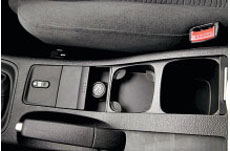 It is very likely that the low popularity of this model was the absence of a really powerful engine: the most powerful of the officially proposed engines in Russia develops 140 liters. with. that against the background of the 260-horsepower Mazda 6 and the 275-horsepower Opel Vectra looks just funny. Needless to say, the dynamics with a top engine is just sufficient? You should not wait for miracles from the suspension settings: neither brilliant comfort, nor acute Primera handling.
It is very likely that the low popularity of this model was the absence of a really powerful engine: the most powerful of the officially proposed engines in Russia develops 140 liters. with. that against the background of the 260-horsepower Mazda 6 and the 275-horsepower Opel Vectra looks just funny. Needless to say, the dynamics with a top engine is just sufficient? You should not wait for miracles from the suspension settings: neither brilliant comfort, nor acute Primera handling. In general, the line of engines in the car is quite wide: three gasoline units with a volume of 1.6, 1.8 and 2 l with a capacity of 109, 116 and 140 liters. With. respectively. In addition, there are a pair of diesel engines: 2-liter develops 120 liters. p., and a 2.2-liter of return almost caught up with a gasoline 2-liter engine (it produces 139 hp and as much as 314 nm of torque). Is it because the diesel Primera in Russia once or two was expected?
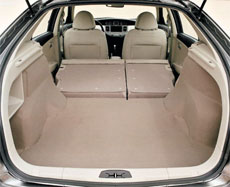 In maintenance, gasoline power units require minimal attention. After 15 thousand km, you should change oil with a filter, and every 25 thousand (however, how lucky) candles. Instead of a timing belt, by the way, a chain is installed, which also needs to be updated, but not more than once by 250 thousand km. Nevertheless, it is impossible to call the motors very reliable: the 1.6-liter unit is even more or less unprincipled, but the 1.8-liter is able to present an unpleasant surprise. Like Almera N16, it is characterized by increased oil consumption. The treatment consists at best in replacing the rings, in the worst in the replacement of the block with the pistons. You can, of course, just add oil and more often check its level, but is it really a hunt for someone to feel like the owner of the old Tarantas, owning a fairly solid and fresh family of a family class? In the 2-liter engine, by the way, there also had increased oil appetite, but the Japanese managed to normalize it, and therefore now only specimens of the first years of release with such engines require a lubrication of lubrication.
In maintenance, gasoline power units require minimal attention. After 15 thousand km, you should change oil with a filter, and every 25 thousand (however, how lucky) candles. Instead of a timing belt, by the way, a chain is installed, which also needs to be updated, but not more than once by 250 thousand km. Nevertheless, it is impossible to call the motors very reliable: the 1.6-liter unit is even more or less unprincipled, but the 1.8-liter is able to present an unpleasant surprise. Like Almera N16, it is characterized by increased oil consumption. The treatment consists at best in replacing the rings, in the worst in the replacement of the block with the pistons. You can, of course, just add oil and more often check its level, but is it really a hunt for someone to feel like the owner of the old Tarantas, owning a fairly solid and fresh family of a family class? In the 2-liter engine, by the way, there also had increased oil appetite, but the Japanese managed to normalize it, and therefore now only specimens of the first years of release with such engines require a lubrication of lubrication. 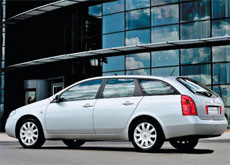 Not everything is smooth and with gearboxes. Looking ahead, let's say that the picture here is an unusual one. After all, as a rule, the manual transmission does not throw cares, unlike the automatic transmission. In the case of Primera, everything turned out differently: the machine, along with the variator, is not annoyed, while the mechanics, on the contrary, loves to pat the owners of Primera nerves. Sooner or later, an unpleasant rumble may appear in the box. He signals that one of the bearings has worn out (this attack, by the way, is familiar to the owners of Almera N16). If you ride, not paying attention to the noise, then do not get to the box for long: a buzzing bearing is a bearing, which is not very long left to live and slide.
Not everything is smooth and with gearboxes. Looking ahead, let's say that the picture here is an unusual one. After all, as a rule, the manual transmission does not throw cares, unlike the automatic transmission. In the case of Primera, everything turned out differently: the machine, along with the variator, is not annoyed, while the mechanics, on the contrary, loves to pat the owners of Primera nerves. Sooner or later, an unpleasant rumble may appear in the box. He signals that one of the bearings has worn out (this attack, by the way, is familiar to the owners of Almera N16). If you ride, not paying attention to the noise, then do not get to the box for long: a buzzing bearing is a bearing, which is not very long left to live and slide. 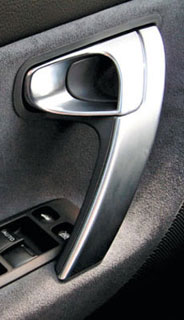 The chassis of the car in terms of reliability is also not accustomed. Most often, you will have to fork out to replace the front -line stabilizer racks (which serve about 4050 thousand km), less often for shock absorbers (100 thousand km they take honestly). However, unforeseen malfunctions also happen: the front lower levers can give slack. The steering rack does not apply to the number of trouble -free nodes: in some cars it flows, and its replacement is in a solid amount (3035 thousand rubles). The brake pads serve approximately the same as for all cars of this class: the front are approximately 2025 thousand km, the rear about 40 thousand brake discs is difficult to erase two sets of lining.
The chassis of the car in terms of reliability is also not accustomed. Most often, you will have to fork out to replace the front -line stabilizer racks (which serve about 4050 thousand km), less often for shock absorbers (100 thousand km they take honestly). However, unforeseen malfunctions also happen: the front lower levers can give slack. The steering rack does not apply to the number of trouble -free nodes: in some cars it flows, and its replacement is in a solid amount (3035 thousand rubles). The brake pads serve approximately the same as for all cars of this class: the front are approximately 2025 thousand km, the rear about 40 thousand brake discs is difficult to erase two sets of lining. It turns out that several factors were determined at once the ugly fate of this model. Firstly, the lack of a powerful engine (where without it in the family class, where at least a 170-horsepower engine should be at the top of the ruler, and ideally even more powerful?). Secondly, with regard to running qualities, the car was, as they say, neither fish nor meat. Thirdly, the people over time saw the Primera not in a Japanese capricious car: a sharp contrast with a modest but reliable Primera P11! Finally, not everyone was ready for a vision of the future proposed by Nissan: people still did not want the era of simple and good family-class machines (such as Toyota Avensis and Mazda 6) sunk into oblivion.
The advantages and disadvantages of the model
Advantages
Interesting appearance
Stylish salon
Adequate cost
Flaws
Low reliability
Inexpressive handling
Weak engines
Video Crash tests Nissan Primera sedan since 2002
Nissan Primera Sedan tests since 2002
Nissan Primera Crash Test sedan since 2002
Krassh Test: Detailed Information29%
Driver and passengers
9%
Pedestrians
Nissan Primera malfunctions since 2002
Nissan Primera Sedan malfunctions: Detailed information| Primera sedan since 2002 | |
|---|---|
| Engine |  |
| Transmission |  |
| Control system and suspension |  |
| Brake system |  |
| Air heating and air conditioning |  |
| Launch and charging system |  |
| Electric components and so on |  |
| Corrosion body stability |  |


